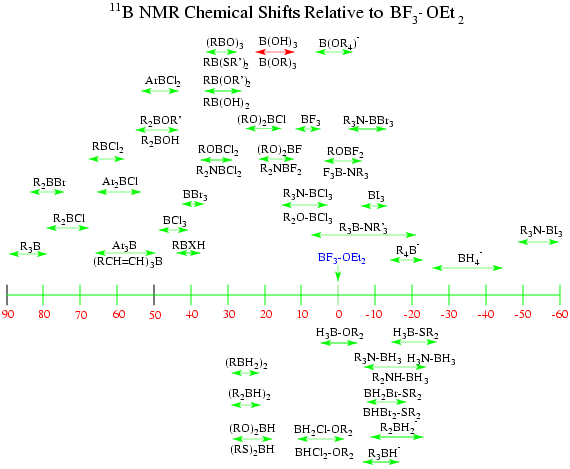Chemical shift
As a chemical shift (English chemical shift ) is called in the NMR resonance line of the relative distance of the sample ( the frequency ) of the resonance curve of a randomly selected standard ( frequency) of the chemical shift is assigned to 0. The independent of the magnetic field strength of the spectrometer used chemical shift is given in ppm and is calculated according to:
Cause the chemical shift, the magnetic susceptibility of the electrons that surround the respective nucleus. This leads to a partial shielding of the external magnetic field by the electrons. The atom portion of a molecule, the electron density and hence the screening effect by the neighboring atoms is influenced. On the whole, the shielding effect is weaker the more electronegative the neighboring atoms. Based on the chemical shift therefore can be identified in an NMR spectrum of individual substituents or functional groups. Estimating can be the chemical shift of one group by the Shoolery rule. Exact values are always also depends on the solvent used, especially in polar solvents or concentrated solutions / substance arising partly strong deviations.
Normally the resonance lines of TMS ( tetramethylsilane = ( CH3) 4Si ) are used as default for the 1H and 13C NMR spectroscopy in organic solvents. Since the silicon atom in TMS has electropositive character, so the TMS reference lines indicate a higher than average shielding effect, are the spectra of most molecules with positive, but negative values are also possible. In aqueous solutions, in which TMS is insoluble, but instead the water-soluble derivatives of DSS ( sodium salt of 2,2- dimethyl-2- silapentane - 5-sulfonic acid ), or TSP (sodium salt of 3 - (trimethylsilyl ) propionic acid ) is used.
In the earlier literature is sometimes still τ (tau ) scale used in the reference signal of TMS is 10 ppm. This scale is no longer in use today. A conversion into the δ scale is easily possible: δ = 10 ppm - τ.










